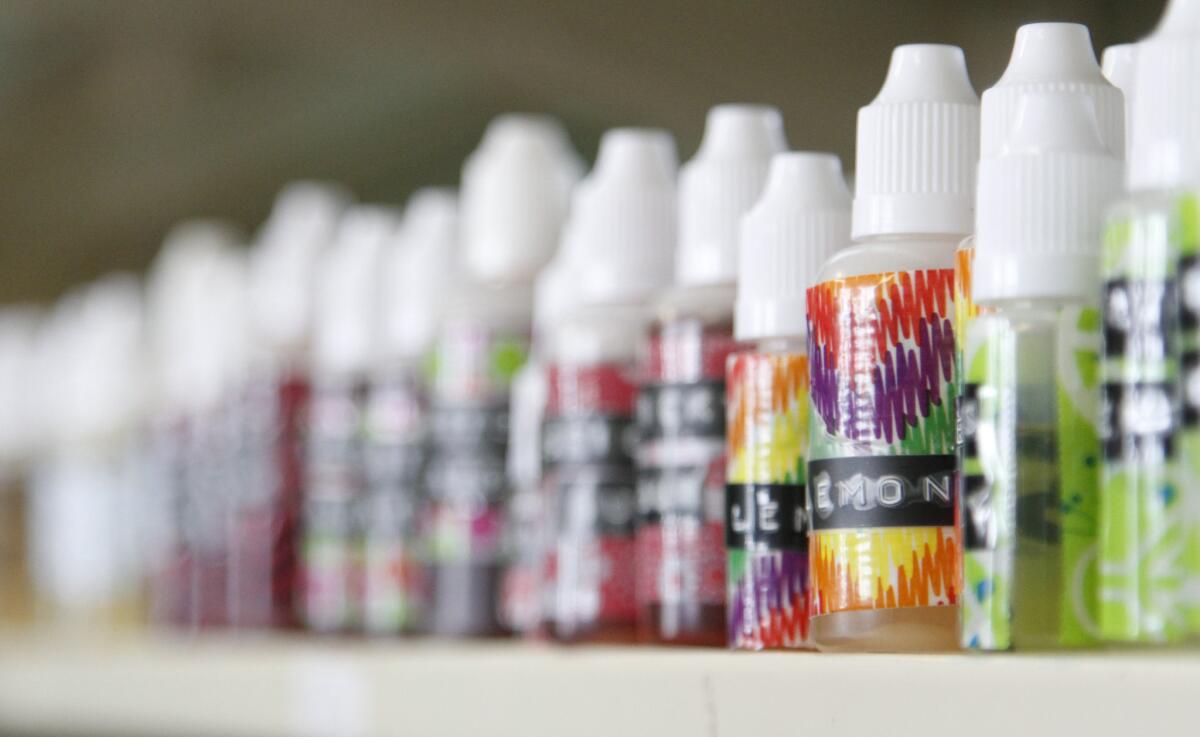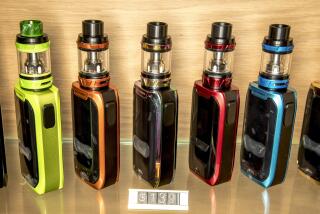The e-cigarette boom: Study finds 466 online brands, 7,700 flavors

If you want a nicotine fix but you don’t like the taste of tobacco, you’ve got options -- thousands of them.
According to a new survey of the e-cigarette landscape, there are more than 450 e-cigarette brands online, offering nicotine products in 7,700 flavors, including graham cracker, Swedish fish and absinthe.
That comes out to an average of 10 new brands and 242 new flavors of “e-juice” per month since a similar survey was done 17 months ago.
“The numbers were pretty startling,” said Sharon Cummins of UC San Diego, one of the authors of the paper published this week in the journal Tobacco Control. “How can you even come up with 7,700 flavors?”
E-cigarettes are battery-powered nicotine delivery systems. They are not regulated by the U.S. Food and Drug Administration, although that’s likely to change soon. The FDA has proposed rules that would ban the sale of e-cigarettes to minors and require e-cigarette companies to list ingredients and nicotine strength. In the meantime, the e-cigarette market is projected to reach $2 billion this year.
The new study looked at data collected in December and January. Fourteen research assistants were asked to spend several days scouring the Internet for websites that sell e-cigarette products directly to consumers.
The names of flavors were tallied, and also grouped into flavor profiles such as tobacco, menthol, fruit, dessert/candy, alcohol/drinks and snacks/meals.
The researchers also looked at the websites’ claims about e-cigarettes, noting whether they suggested that e-cigarettes were less harmful than conventional cigarettes, or cheaper than regular cigarettes, or a good way to quit smoking.
The findings suggest a sea change in the way e-cigarette companies are marketing their products. Newer brands were more likely to offer a wider variety of flavors than brands that were around in 2012. The newer companies were also less likely to make claims that e-cigarettes were healthier or cheaper than traditional cigarettes.
“It almost seems that newer brands don’t want to be compared to cigarettes, which are associated with the image of cancer,” Shu-Hong Zhu, lead author of the study and director of the Center for Research and Interventions in Tobacco Control at UC San Diego, said in a statement.
Though the study tells us a lot about the e-cigarette market, it doesn’t tell us whether e-cigarettes are helping smokers quit smoking, or if all those flavor options will entice non-smokers to start smoking.
“We don’t have the data to know the long-term trajectory of e-cigarettes being good or bad,” said Cummins.
But she and her colleagues don’t necessarily think this bevy of flavors is a bad thing, for now, especially if it’s luring smokers away from regular cigarettes with their poisonous tars and carbon monoxide.
“If regulators clamp down on e-cigarette flavors and everyone goes back to regular cigarettes, that is a bad thing,” Cummins said.
For more news from the world of science, follow me @DeborahNetburn







